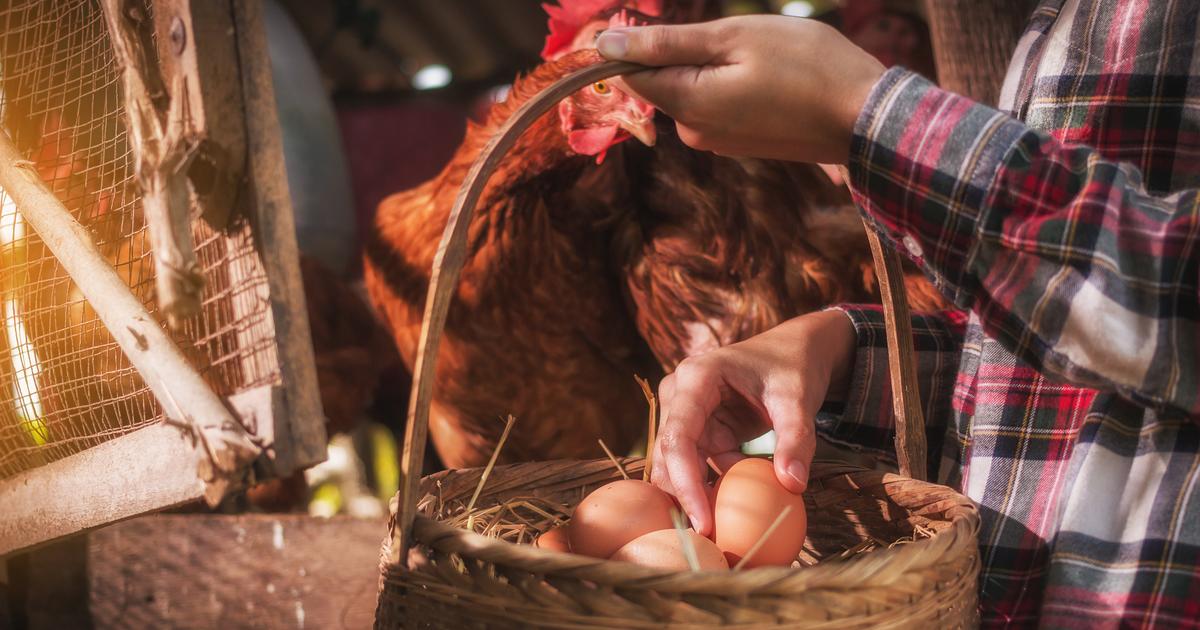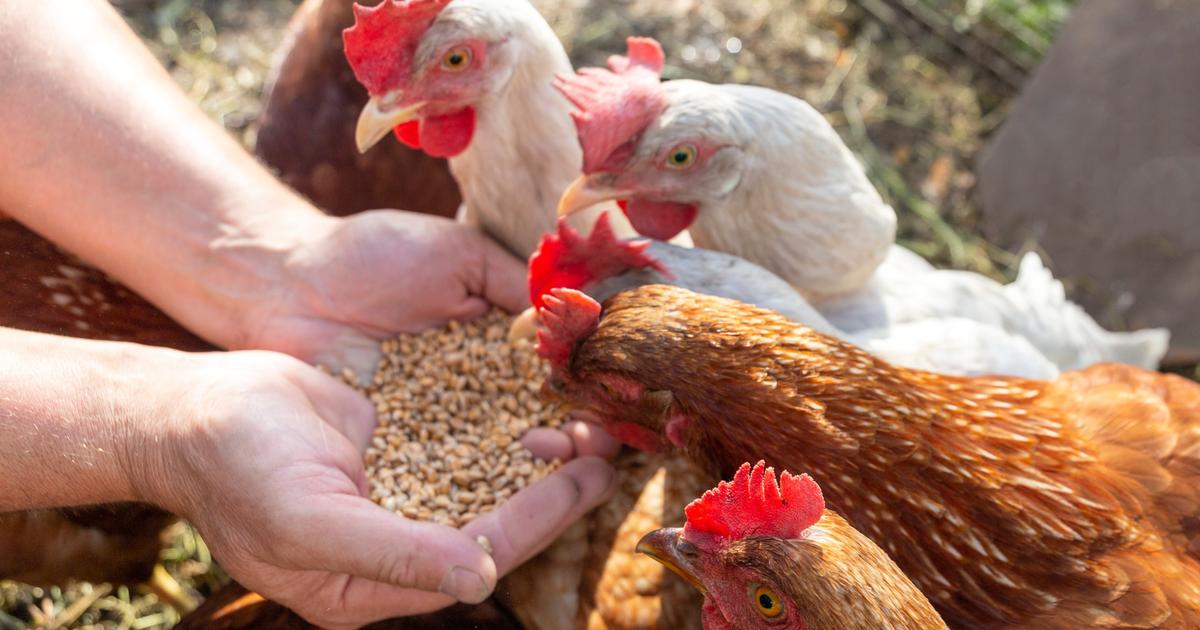The average German eats 238 eggs a year – but have you ever wondered what the stamp on the eggs actually means and what it has to do with how they are kept?
In 2021 alone, Germany's citizens ate an average of 238 eggs per person.
Hard-boiled, perfectly scrambled (with cream), in fried egg form (tip: fry with a lid) or used in pancakes or other dishes.
This is probably one of the reasons why the selection on the egg shelf is so large - and there is usually something for every budget there.
And that's exactly where the problem lies: because many eggs, especially those in the lower price range, are unfortunately produced under living conditions that are not animal-friendly.
If you want to pay attention, you should know what the numbers on the egg stand for.
Eleven baby animal pictures that will make your heart beat faster
Scottish Highland Cattle are considered to be the oldest recorded cattle breed and actually come from rough Scotland.
This is probably one of the reasons why you see them more and more often on German pastures, where they can stand outside all year round.
Even the calves are well protected from the cold, wind and weather with their fluffy fur.
(Iconic image) © M. van Duijn/Imago
It is not uncommon to see individual fawns in their first three to four weeks of life.
Only then do the young animals accompany their mother.
Until then, they lie in hollows in fields or in the forest.
From March to September you should therefore not let your dog roam freely in the forest.
As a human, you don't have to intervene immediately when you find an abandoned fawn.
As a rule, the mother animal collects her young again.
(Iconic image) © blickwinkel/Imago
They look as if they couldn't cloud a little water.
Raccoons, no matter what age, are one thing above all: curious.
They are particularly common in urban settlements, where they inspect garbage cans at dusk or at night or steal food from outdoor cats.
They can also cause a lot of chaos in the shed or attic, for example.
But should that surprise?
After all, even the boys wear black eye masks to remain unrecognized.
(Iconic image) © EEI_Tony/IMago
Squirrels can be seen here all year round, with the first young animals appearing around May.
And while the adults are adorable, you just want to protect the young ones.
This is probably one of the reasons why numerous squirrel babies are raised and nursed by hand every year.
Perhaps the young animals fell out of their hut or fell out of the branches during their first attempts at climbing.
(Iconic image) © Matthias Krüttgen/Imago
Lamb runs on a snow-covered meadow. To the right, to the left, do hooks - shortly after birth, lambs are so fit that all they really want to do is run.
Well, first comes the meal at Mama's, when the little tail twitches back and forth very excitedly.
After the romp comes the nap.
Some lambs are born even when there is still snow.
But they don't usually freeze, thanks to the dense wool.
(Iconic image) © blickwinkel/Imago
Baby bunnies in gray Short ears, a quivering nose and just plain cute - baby bunnies (and their full-grown representatives) are among the most popular pets in Germany.
The rodents should not be kept alone and are not cuddly toys, but with patience they can learn tricks.
(Icon image) © CSP_hasrullnizam/Imago
Kitten plays with string.Predators in mini bodies: Kittens are curious and love to play with everyone and everything.
In the first few months, they can easily get used to dogs and other animals, and they usually learn to use the litter box on their own or from their mother.
The eye color of kittens, like that of most other mammals, is blue at first and is still changing.
(Iconic image) © Juan Alberto Ruiz/Imgao
Two ducklingsYour soft squeaking and the soothing cackling of Mama Duck can be heard in spring on numerous bodies of water in Germany.
They swim in rank and file after their mother and hide together under bushes on the bank as soon as danger threatens.
Amazing: Even if the feathers of the chicks look so fluffy: It is so waterproof that they are in the water the day after hatching at the latest.
(Iconic image) © hecke/Imago
Two sleeping retriever puppies - The first trip to the garden was probably particularly exciting: Puppies process their impressions best when they sleep.
They open their eyes at around 10 to 14 days and at around four weeks the world outside the whelping box is properly discovered.
But the little ones aren't housebroken yet, so a lot of training still needs to be invested.
(Iconic image) © Christian Zappel/IMago
Mare and foal on a pasture. If you look closely, the legs of the foals are not that much shorter than those of the adult horses.
This is probably one of the reasons why it always looks a little stalked when the young animals romp across the pasture and paddock.
But observers have to smile regularly during the race.
(Iconic image) © Justus de Cuveland/Imago
A black-pink pigletPigs come in different sizes and colors.
Some of the older breeds are, for example, the Bunte Bentheimer or the German saddle pig.
You can often see them in animal parks or museum villages.
Regardless of breed, piglets have one thing in common: they are sweet as candy – and always seem a bit like they are walking on tiptoe.
(Iconic image) © MBerg/Imago
By the way: You can even train chickens to flee from falcons, for example.
Decode eggs - the code reveals how the chickens are kept
Since 2004, every egg produced in the EU, whether brown or white, has had to have a producer code.
From this it is then possible to find out from which attitude the egg comes, from which country and even from which barn.
+
The numbers and letters on the eggs indicate the origin and type of husbandry.
Here: housing type (0), origin (DE), identification number (13), company number (0087), barn number (1).
© Zoonar.com/Stockfotos-MG/Zoonar.com/Imago
The first number indicates how the chickens are kept, with 0 standing for organic eggs and 3 for cage eggs:
Designation | number | space |
|---|---|---|
Organic production/organic eggs | 0 | 1 m2 for 6 hens (+4 m2 free range per hen) |
Free range/free range eggs | 1 | 1 m2 for 9 hens (+4 m2 free range per hen) |
Free run | 2 | 1 m2 for 9 hens (+4 m2 free range per hen, may not go outside) |
Small group housing/cage eggs | 3 | 1.5 DIN A 4 sheets (per hen, cages with up to 60 hens) |
The type of husbandry is followed by the country of manufacture, for example Germany (DE), the Netherlands (NL) or Austria (AT).
After that, it is further divided: according to company and barn.
What they have in common, however, is that processed eggs, brightly colored for Easter, made into pasta or used as an ingredient in cakes, no longer have to be labelled.
Some manufacturers are definitely focusing on quality here, but the fact is that level 3 eggs are the cheapest.
You can find even more exciting animal topics in the free partner newsletter from Landtiere.de, which you can subscribe to here.
In New Zealand, cage battery keeping was banned at the beginning of this year - with the result that the ones there became scarce.
What to look out for when buying eggs
If you want to know more precisely whether your eggs come from happy chickens, you can pay attention to certain things when shopping:
Mobile app and Internet:
The code of eggs can also be decoded by tools - so you don't have to remember the individual numbers.
Here, for example, the app “Eiercode – what is written on the egg” or the website “was-staut-auf-dem-ei.de” are very useful.
Weekly market or farm shop:
If you have the option, you can only buy eggs at the weekly market or in the nearest farm shop instead of in the supermarket.
The website “mein-bauernhof.de” provides an overview of the various shopping opportunities.
Prefer organic food:
When buying processed food, you should pay attention to the “organic” additive.
Because then only organic eggs may be included.
And there is also a huge selection of pasta that does not use eggs as an ingredient.
Pay attention to certain brands:
With organic products you can already rule out a few types of husbandry.
But you can be on the safe side if you use products from Bioland, Demeter or Naturland.
They have strict guidelines in terms of space, nutrition and medical care.
A large number of recommended brands can also be found on the website of the German Animal Welfare Association.
If you have the opportunity, you could also just get chickens - and enjoy eggs from "happy animals".
Of course, this doesn't work for everyone.
Rubric list image: © Zoonar.com/Stockfotos-MG/Zoonar.com/Imago














